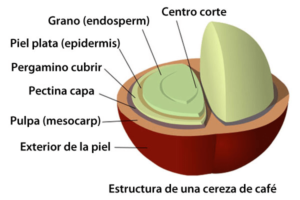When we think of coffee, we visualize it in its final stage, but to be able to distinguish it, it is very important to know its origin, the coffee plant.
For people who work at any link in the immense coffee chain and who seek the professional side of their work, as well as the loyal consumer, usually passionate about this product and who wants to understand a little more about why it tastes so different in each place where they drink coffee, the first question to begin to understand this universe should be: What is coffee?
When we hear the word coffee, the first thing that comes to mind is a cup filled with dark liquid and an incredibly captivating aroma. It's curious that, given the process and long journey this product undergoes, the first image that comes to mind is its final state—the image of its last stage, the final stage, of its long and complicated path.
On the other hand, when we hear the word "chicken," we don't picture a breaded chicken breast with tomato sauce on top; we picture the animal, the origin of the product. This reality reveals a lack of coffee culture and the ignorance surrounding this bitter, dark-colored beverage.
Discover the best coffees
View all cafesWhere does coffee come from?
The origin begins with a shrub called the coffee plant . In the wild, this shrub can reach up to twelve meters in height. It's important to note that although it's a shrub, it's a fairly robust plant. We'll delve into the different botanical aspects of the coffee plant in future posts, as these, of course, also affect the quality and final flavor of the coffee in the cup.
The coffee plant produces a fruit called the coffee cherry ; this is very important and reveals the first key about this product, something that many people had not even considered.
Well, it turns out that coffee is indeed a fruit! And as a fruit, it's already starting to reveal the first clues about the flavors it will offer. Because all fruits have one thing in common: at optimal ripeness, they have a high sugar content.
The coffee fruit, the coffee cherry, is composed of an outer layer called the skin, followed by the pulp or mucilage, which is the flesh of the fruit, the equivalent of the part of an apple that we eat. Next, we find the parchment, a layer that covers each of the two seeds contained in the cherry, or in other words, covers the coffee bean as we know it, which is the seed of the coffee cherry.
.

Today we consume this ground seed, prepared in various ways, transforming it into that hot and revitalizing beverage we all love . It originates from different countries such as Brazil, Colombia, and Indonesia, and we can find everything from the most common coffees to meticulously cultivated and processedspecialty coffees .







